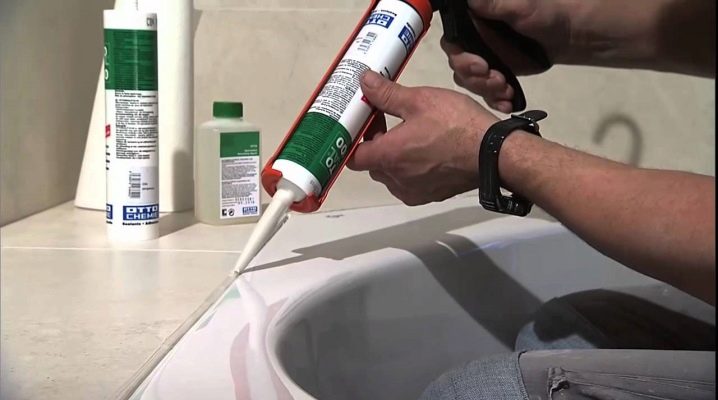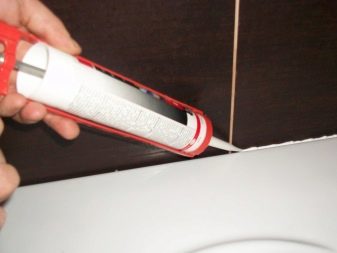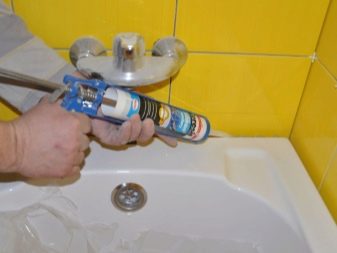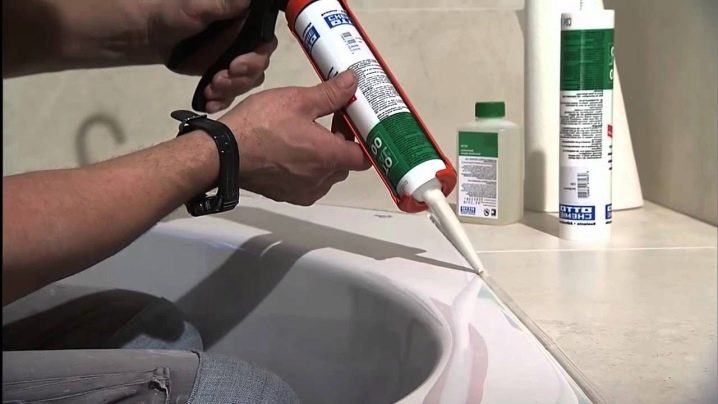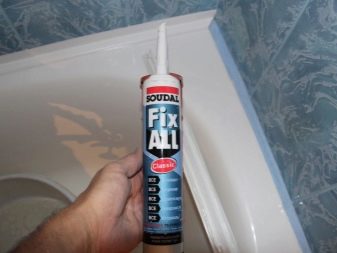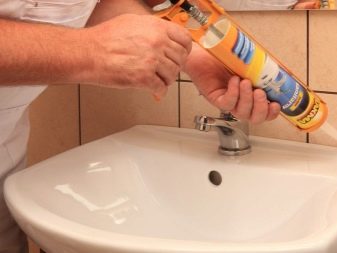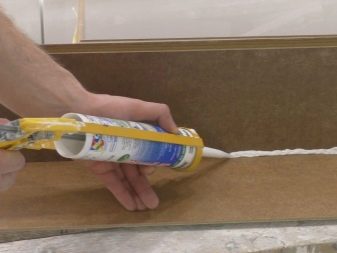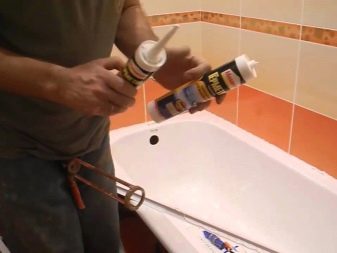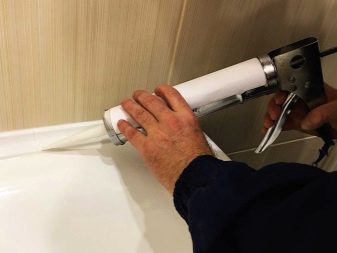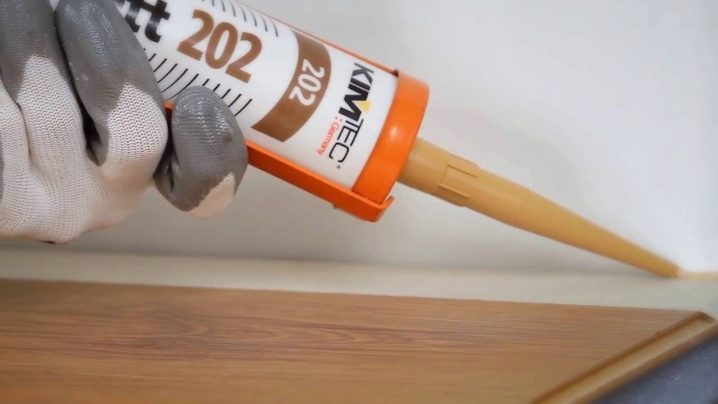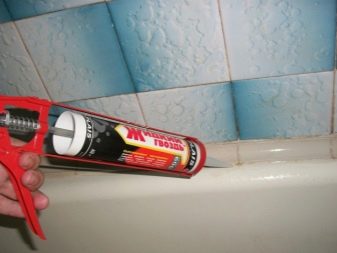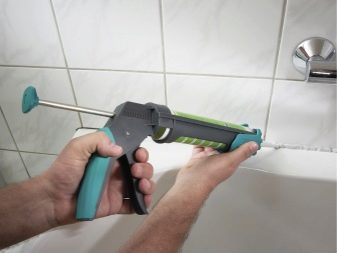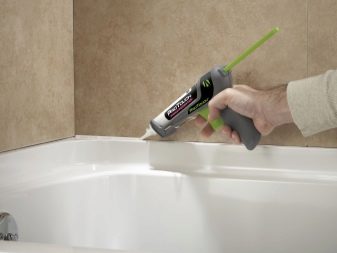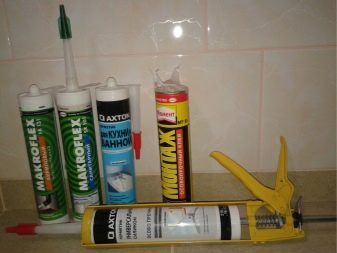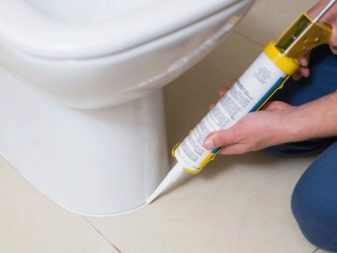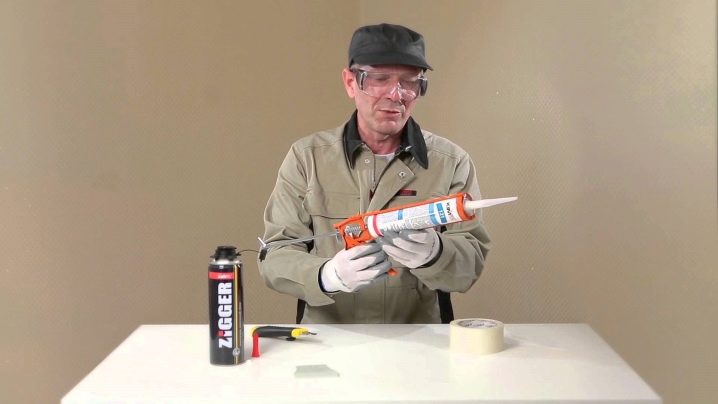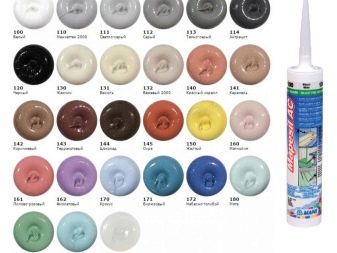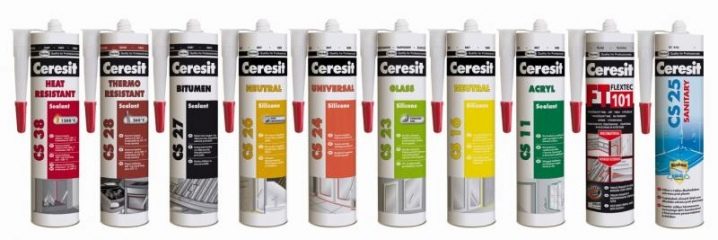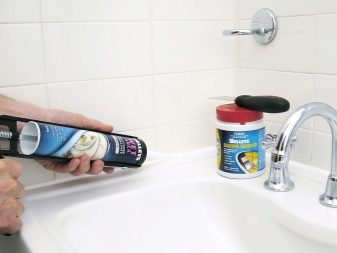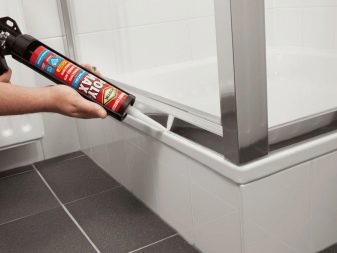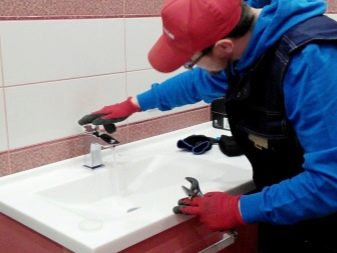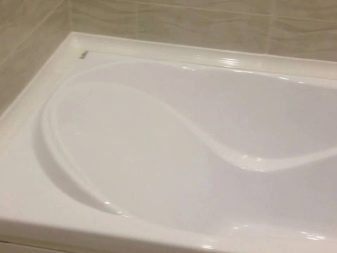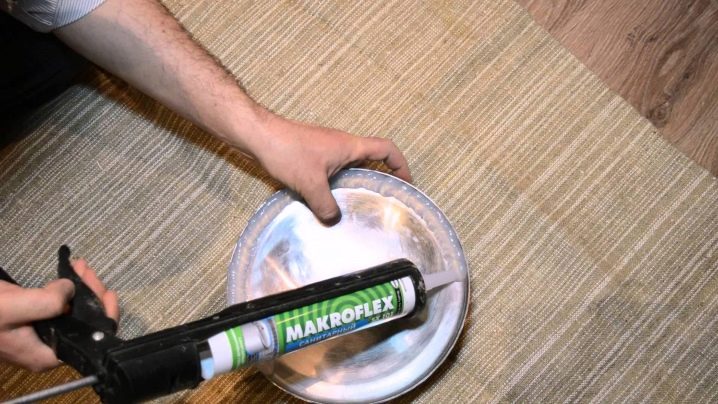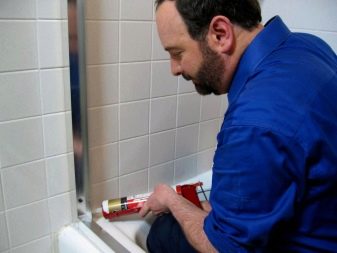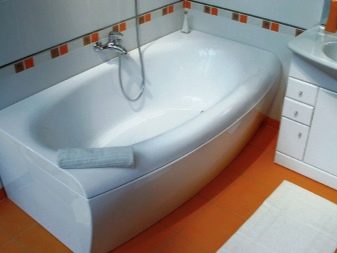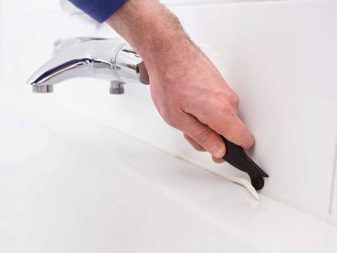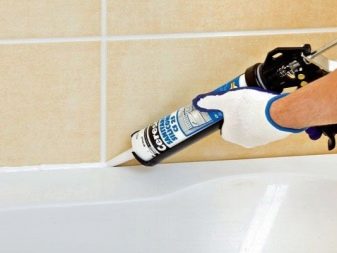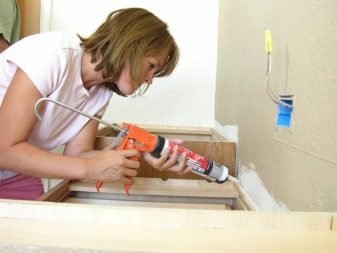Bathroom sealant: which one is better to choose?
If the owner repairs the bathroom, he cannot do without high-quality sealant. Such mixtures are necessary to prevent the penetration of water in the gaps between the bathroom itself (or shower) and the wall. In addition, the sealing compounds isolate and interdigital seams, pipe joints and even furniture edges.
Special features
Repairs to the bathroom should be taken especially responsibly, since there is always a high level of humidity in this room. In such conditions, not all finishing materials can be found, but only those that are designed for such operation - they must be reliably protected from deep penetration of moisture and moisture. To cope with these tasks, you can use sealant.
The qualitative composition not only hides the tile joints and various gaps in the finishing or furniture, but also provides a more attractive and tidy appearance, because the darkened and dampened gaps look very ugly and sloppy. Because of such elements, the design of the bathroom may be hopelessly flawed.
Modern sealing compounds are used to increase the strength of the compounds in the sewer assemblyand also to prevent water leaking from the gap between the shower and the shower tray. These elements should not be left without high-quality sealing, because otherwise the room will always be wet and untidy.
With the help of sealant, tile can be glued not only on concrete floors, but also on such bases as drywall, plywood, chipboard or plastic. This feature of the compositions pleases consumers who have bathrooms with uneven and deformed walls. Tiles cannot be laid on such bases until they are perfectly level. Various pads - the only effective way in this situation.
Floor tiles laid using high-quality sealant will withstand heavy loads. Finishing material will last for many years without causing any problems.
Currently, you can choose a sealant for the bathroommade in any color. The range of these mixtures is presented not only simple white and translucent, but also multi-colored compositions. As a rule, they are selected in accordance with the color of the tile.
Today, there are several types of sealants that can be used in the bathroom. Each of them has its own characteristics and performance.
Kinds
Silicone
Such specimens are among the most popular species. Most often they are chosen to seal the bathroom. The basis of these compounds is silicone.
Benefits.
- Such materials have excellent water repellency. Thanks to this advantage, they can be safely used in the bathroom.
- Silicone-based sealant is durable.
- Such a mixture will guarantee excellent adhesion of various kinds of liquid and solid bodies at the level of molecules.
- The compositions are available in a wide range of colors.
- Gaps and tile joints treated with silicone sealant will not be exposed to mold and mildew.
- After complete drying, the mixture shrinks no more than 2%.
- Silicone compounds can be used not only for the bathroom, but also for other internal and external surfaces.
- Such compositions are not afraid of temperature drops. So, high-quality silicone sealant will transfer temperature from -50 to +200 degrees without any problems. Under these conditions, the performance characteristics of the mixture will not be affected.
There are two types of silicone sealants.
- Acid (acetic) composition. These options are very popular because they are quite inexpensive. However, such a sealant can be applied only to stainless and non-oxidizing materials.
- Neutral composition. There are no acids in this sealant. It costs more than the acid product. However, this material does not have serious drawbacks - it is possible to miss them with different surfaces without restrictions. It seamlessly contacts with any bases: from acrylic to steel.
Acrylic
This kind of hermetic composition is cheaper than silicone, but it feels not so good in the conditions of a wet bathroom.
The advantages of acrylic composition include:
- low cost;
- tolerance of temperature differences;
- not subject to burning out;
- the possibility of finishing paint, varnish or putty after complete drying;
- ease of application - it is very convenient to work with such a sealant;
- high adhesion rates - the compound easily adheres to most different materials.
However, acrylic compositions do not differ sufficiently elastic. Because of this feature, they should be used only in those areas that are not subjected to deformations during operation.
There are no organic components in the composition of acrylic compositions. Most experts attribute this feature to the pluses of acrylic blends, because of this it is possible to work with them without additional means of protection - sealants do not emit corrosive and unpleasant odors during the application process.
Today in the shops you can find several types of acrylic sealants. Some compounds are moisture resistant, while others are afraid of moisture, so you need to pay special attention to the composition of the purchased product so as not to stumble upon a mixture that will not last long in the bathroom.
Silicone Acrylic
Such mixtures are composed of acrylic and silicone. This kind of sealant enjoys an enviable demand, because it has many positive qualities and a minimum of drawbacks. After complete solidification, such a composition becomes very hard, but remains elastic, like rubber.
Siliconized acrylic sealant is very durable and reliable. It is often used as an adhesive, if you want to connect between two different surfaces, while isolating them.
Polyurethane
The basis of this sealant is polyurethane. Such compositions are characterized by ease of application, durability and high efficiency of use. The content of polyurethane putty contains moisture, which, in contact with ambient air, triggers the polymerization process.
The polymer composition is perfect for the bathroom, because in contact with excess moisture it becomes even more durable. In addition, polyurethane putties are resistant to mechanical damage and heavy loads, and therefore form a fairly durable and elastic coating.
Polyurethane sealants have their own distinctive features. So, they are distinguished by their fast adherence to most surfaces, equally rapid hardening and increased adhesion characteristics.
In addition, these types of sealants are economical and easy to use. If a layer was damaged in some area, it can be restored very easily and quickly. Apply a polyurethane composition can be on a variety of materials.
After complete drying, these putties can be painted or varnished. However, it should be borne in mind that the open packaging should be used as quickly as possible - the process of polymerization of the sealant begins inside. When applying such material, you should use personal protective equipment and ensure that it does not get on the skin or mucosa. Experts recommend to stock up on thick gloves and work in them.
Colors
Modern sealants are produced not only white and transparent, but also multi-colored. By purchasing the color composition of a suitable tone, you can give the finish in the bathroom a more complete and harmonious appearance.
Today in stores you can meet sealants of the following colors:
- gray
- black
- brown;
- metallic;
- caramel;
- yellow;
- coral.
High-quality color formulations do not lose their saturation for a long time, the only exceptions are acrylic blends. Under the conditions of a bathroom, they may turn yellow, so it’s better not to take light variants - they will have to be changed soon. For such a room is more suitable color or clear acrylic composition. On these sealants yellow spots are almost imperceptible.
How to choose?
Many consumers underestimate the role of sealants in the design of a bathroom or toilet, and in fact it is directly dependent on such putties how well all seams and joints will be sealed. Fortunately, modern manufacturers offer a wide range of adhesive mixtures of different compositions and colors to the choice of buyers.
Choosing such products, you should rely on a number of important criteria.
- Colour. As mentioned above, sealants are not only available in a transparent form. Of course, such options are universal, like white ones. However, it will be more interesting and harmonious to look like a room modified with a sealant of a suitable color.
- Water resistance. A bathroom is a room with a high level of humidity, so it is necessary to select compositions for it that will seamlessly carry the detrimental effects of moisture and moisture. These sealant characteristics are always indicated on the packaging.
- Purpose Sealing compositions are domestic and professional. The latter have improved technical characteristics, but working with them is a little more difficult, and they cost more.
- Surface. For some types of surfaces it is necessary to select special sealants. For similar reasons include PVC panels or metal.
- The amount of impurities. It is worth paying attention to the number of additional components in the composition of the sealant - they should not be too much.
- Brand You should buy only high-quality sealing compounds from reputable manufacturers - this way you can save yourself from purchasing low-quality goods. The cost of many branded sealants is quite high, but their performance and durability justify the price.
For sticking mirrors, experts recommend buying a neutral silicone sealant.As for the more aggressive acidic version, they are often treated with countertops, sinks and furniture edges not only in the bathroom, but also in the kitchen.
If the bathroom tile fell off, then it can be attached back using a quality composition based on polyurethane. Such a sealant has an increased adhesive ability, so with its help you can quickly and reliably fix the fallen part to its original place.
If you want to choose a suitable sealant for sealing pipe joints in the bathroom, then you should pay attention to what they are made of. So, for steel structures, you can purchase a silicone or polymer composition. As for plastic and metal-plastic pipes, it is better not to buy polyurethane mixtures for them - instead of them you should look for high-quality silicone sealant.
Bathrooms located in wooden houses, most often finished with waterproof plasterboard canvases. However, they often “play” in height, so there are usually noticeable gaps between the sheets of drywall and the ceiling.They can not be left open, otherwise there will get destructive moisture. The gaps must be filled with a suitable and elastic composition. High-quality silicone or polymeric material will easily cope with these tasks.
Seam-treated seams often begin to turn black after a while. To avoid such problems, you should purchase adhesive mixtures, which include antibacterial components. In stores you can meet special sanitary sealants that are not afraid of fungus and mold.
How to seal your own hands?
You can seal this or that surface in the bathroom yourself. You do not need to have special knowledge and extensive experience. It is quite enough to follow simple instructions. If done correctly, the result will not disappoint.
Foundation preparation
Sealant should be applied only on carefully prepared surfaces. First, the base should be cleaned of dust, dirt and remnants of the old sealant. Then the surface must be well degreased - for this is best suited alcohol or acetone. After treatment with these compounds, the base should be wiped dry.
If there are large seams on the base, then it is recommended to burn them with hot air - for this you can use a regular hairdryer. As a result, the surface will be perfectly clean and completely dry.
Then it should be carefully and smoothly glue masking tape on both sides, running along the seam. It is necessary that the finishes are protected from getting putty. This stage is not mandatory, but experts advise to use it. Thus, a strip of sealant will be more accurate, and the surrounding materials will remain clean.
Sealant preparation
Modern sealants are sold in tubes of 80-400 ml. According to professional decorators, it is much more convenient to use small bottles. The applicator for application can be supplied with the tube. If it is not, then you should use a special gun (manual or rechargeable batteries).
The tip of the bottle must be cut. The incision is preferably done at an angle of 45 degrees. The location of the cut must be chosen depending on the width of the seams, which require sealing. After that you can insert the tube into the prepared gun.
Drawing
In order to gently apply sealant, you must put the tip of the tube to the point of the beginning of the seam and gently squeeze the mixture, slowly moving forward. It is necessary to “hammer” the composition as deeply as possible and always with one effort to pull the trigger of the building gun. Avoid breaking the applied layer, otherwise water will seep into the seam.
To make the seam smoother, you can simply hold it with your finger dipped in soapy water. Also, to align the sealant, you can use a special elastic spatula. Some craftsmen put on a special nozzle on the tube that evens out the applied layer of sealing compound. Such a device allows you to apply and smooth the sealant.
Final processing
At the end of all the work should be removed strips of masking tape. This should be done in the event that the sealant did not have time to completely harden. If in the process of removing the adhesive tape, the applied layer of the sealing compound is damaged, then it needs to be slightly wetted and leveled.
If the sealant gets on the surrounding objects (plumbing, tile or furniture), then it should be quickly removed with a regular wet cloth.To remove stubborn dirt, it is recommended to use solvent or refined gasoline.
Be sure to ventilate the room after completion of work. You can use the bathroom immediately after the sealant is completely dry.
Tips
For the qualitative implementation of all the work should be based on the advice of professionals.
- If it is necessary to fill the seam between the bathroom and the wall, then it should be borne in mind that it is usually quite deep. It is necessary to glue a narrow strip of foam under the shelf of the bathroom and only then process the joint. Thanks to these actions, the sealant will not drain.
- Sometimes it is necessary to establish a corner between the bathroom and the floor. This part is necessary to avoid running water onto the floor. Sealant in this case is used for additional mounting angle. However, it should not be applied on the curb itself, but on the wall and shelf of the bathroom. After this corner should be put on the right place and press.
- Often the hermetic material is used to glue the tile. In this case, the composition should be applied only to the tile itself in small strips along the entire perimeter and diagonal.After that, the finishing material must be firmly pressed to the previously prepared base.
- With the help of a sealant, it is also possible to seal the interlayer stitches. During such work, it is recommended to use masking tape to protect the tile, and as soon as possible to remove excess material with a spatula. All joints must be filled to the full depth.
- To prevent a fungus or mold from appearing on the surface of the sealed gaps, the room must be provided with high-quality ventilation and adequate heating.
- For sealing it is necessary to use compounds that contain additional components against mold and mildew. Such mixtures do not blacken over time. However, you should not buy products in which there are too many additives (more than 10%).
- If it is necessary to apply sealant as carefully as possible, then you can use a small plastic spatula - with its help you will be able to quickly and accurately cover the seams.
- Do not use the bathroom until the sealant is completely dry. Most often it takes about 8-10 hours.
- Be sure to remove the old sealing agent before applying a fresh layer of sealant.Otherwise, the mixture will not adhere to the base properly.
- Experts recommend treating various surfaces in the bathroom with branded and high-quality compositions from well-known brands. These include products from Ceresit, Somafix, Boxer, Belinka, Tytan, Krass, Moment, Ciki Fix.
To choose a sealant for the bathroom, see the following video.
